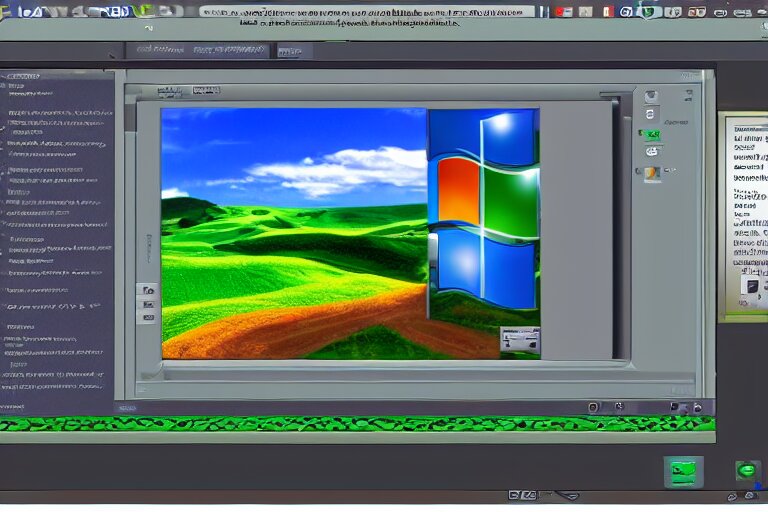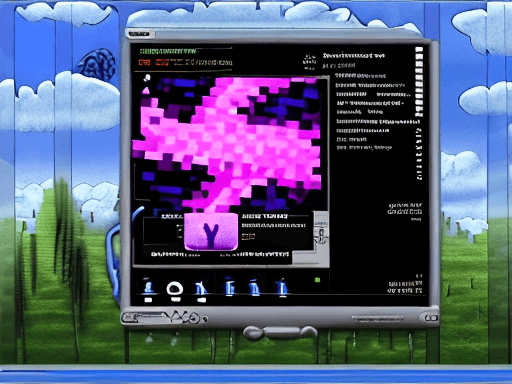Digitize as a process can be performed using a variety of software programs that are designed for different types of data. For example, convert written documents into digital formats, manipulate photos and create digital artwork, help to organize and store digital documents in an efficient manner and Video conferencing tools facilitate remote collaboration between team members.
Do you want to digitize your documents, photos, or artwork? Are you looking for the best software that can help make it easier? Look no further! In this blog post, we will discuss what software is used to digitize your files and provide you with some of the top options.
What is Digitization?

Digitization is the process of converting information into a digital or computer-readable format. It involves taking analogue data, like paper documents, audio, and images, and transforming them into digital files that can be accessed, stored, and shared online. Cloud storage platforms allow users to securely store and access their data from any device.
Online project management tools help track progress on projects. Spreadsheet applications are used to create and analyze numerical data. Data analytics programs help generate insights from large datasets. Digital asset management solutions help organizations manage their digital assets. Enterprise resource planning systems help companies manage their resources more effectively. Finally, business process automation platforms automate manual processes and streamline operations.
Types of Digital Software
When it comes to digitizing, there is a wide range of software available for the task. Digital Adoption Platforms (DAPs) are designed to streamline the process of digitizing and provide an intuitive user experience. SewWhat-Pro is a popular software used for embroidery editing and customization, as it offers functions similar to other design programs. Embroidery digitizing software such as Chroma is easy to use and offers automated digitizing features.
Additionally, OCR software can be used to scan documents and photos and convert them into a digital format. Image editing and manipulation software like Adobe Photoshop can be used to refine the images before they are saved in a digital format. Document management systems like Microsoft SharePoint can help organize and store large amounts of data. Video conferencing and collaboration tools like Zoom or Microsoft Teams provide a platform for remote teams to communicate and collaborate.
Cloud storage platforms such as Google Drive or Dropbox allow users to store data online with easy access from anywhere on any device. Online project management tools like Asana or Trello let teams track progress and manage tasks. Spreadsheet applications like Excel can be used to create tables, graphs, and formulas for data analysis. Data analytics programs such as Tableau or SAS can help organizations interpret large amounts of data and develop insights. Digital asset management solutions such as Bynder or DAM provide organizations with an efficient way of organizing digital assets. Enterprise resource planning systems such as SAP or Oracle ERP enable businesses to manage
Choosing the Right Software

When it comes to digitizing a business, choosing the right software is one of the most important decisions you will make. The right software should be able to meet the needs of your business, while also being easy to use and cost-effective. It is essential to consider the features and capabilities of the software, as well as the user experience and customer service of the vendor.
To help you make the right decision, you should take the time to plan, prepare, and implement your digital transformation. This means researching different software options and determining which ones best suit your needs. You should also consider factors such as scalability, security, and integration with existing systems.
Once you’ve identified a few potential solutions, it’s important to test them out before making a final selection. This will give you an opportunity to evaluate how user-friendly the software is and determine whether it meets your expectations. Additionally, it’s beneficial to reach out to the vendor and ask questions about customer service, training, and pricing.
By taking the time to properly research and evaluate different software options, you can ensure that you select the right system for your business. Doing so will help you streamline your processes, maximize productivity, and get the most out of your investment.
Let’s Know The 10 Software Used To Digitize
1. Scanning Documents and Photos with OCR Software
Scanning documents and photos with Optical Character Recognition (OCR) software is one way to digitize them. OCR is a technology that recognizes and reads text within scanned documents, photos, or other digital images. It can quickly convert physical documents into digital text so they can be easily edited and manipulated.
OCR software can be used to scan documents and convert them into editable formats such as Word, Excel, PDF, or HTML. It can also be used to scan photos and manipulate the images to create unique and interesting visuals. OCR software provides an efficient way to quickly digitize documents and photos, making them easier to store, share, and manage.

2. Image Editing and Manipulation Software
When it comes to digitizing, image editing and manipulation software are essential. This type of software allows users to enhance images, adjust colours, crop, add effects and more. Some of the most popular software for image editing and manipulation include Adobe Photoshop, GIMP and Lightroom. Photoshop is the industry standard for professional image editing and manipulation, offering a wide array of features and tools for advanced image editing.
GIMP is an open-source image editor with many of the same features as Photoshop, but it is available for free. Lightroom is a popular choice for photographers, as it provides a streamlined workflow for editing photos quickly and easily. All three programs offer powerful tools for transforming images into professional-looking digital masterpieces.
3. Document Management Systems
Document management systems (DMS) are an essential tool for businesses that need to store, access, and track large volumes of digital content. DMS software solutions allow companies to easily organize and secure their digital documents, making them accessible to multiple users and departments.
These systems also help with document automation and workflow, allowing teams to quickly review, approve, and share documents in real-time. Document management systems use powerful encryption technology to protect files while also providing advanced search capabilities so users can quickly find the documents they need. With these systems, businesses can easily store and manage documents in paper and digital formats in a secure, centralized repository.

4. Video Conferencing and Collaboration Tools
Video conferencing and collaboration tools have become an essential part of business communication in the digital era. These tools provide the ability for teams to connect, share ideas, and work together in real time regardless of their physical locations. Popular video conferencing and collaboration tools include TeamViewer, Wrike, Zoom, Skype, GoToMeeting, Meeting Owl, and Skype for Business. All of these solutions provide a combination of audio and video to facilitate virtual meetings and ensure clear communication.
TeamViewer is an easy-to-use remote access software that helps users stay organized. It is available on all mobile devices and allows users to join meetings with just a few clicks. Wrike is an award-winning collaborative work management software trusted by over 20,000 organizations. Z
oom unifies cloud video conferencing, online meetings, and group messaging into one easy-to-use platform. Skype is Microsoft’s well-known video-calling software that has become a leading business tool. GoToMeeting is an online meeting software that enables businesses and teams to collaborate via video, chat, and screen sharing. Lastly, Meeting Owl is an intelligent 360-degree all-in-one video conferencing device.
In order to ensure effective collaboration within a team, it is important to choose the right video conferencing and collaboration tools for your organization’s needs. By understanding the features of each solution and taking the time to evaluate their benefits
5. Cloud Storage Platforms
Cloud storage is an essential part of the digital transformation process. It allows businesses to store and access data from anywhere, at any time. Cloud storage also provides a secure environment for data storage and backup, protecting it from potential threats. There are several cloud storage providers available, such as ownCloud, iCloud and Google Drive. Each platform offers different features and capabilities, so it’s important to choose the right one for your business needs.
ownCloud is a cloud storage solution that aims to digitize and modernize the public sector while safeguarding sensitive data from potential threats. It offers integrated collaboration tools, easy user access control and activity monitoring. pCloud is another great choice for businesses looking for secure, simple-to-use cloud storage for their documents.
It provides secure file sharing, real-time data backups and access control. Google Drive is a popular cloud storage provider that offers users 15GB of free storage space. It also comes with several collaboration tools, allowing teams to work on projects in real time.
Choosing the right cloud storage provider for your business is an important decision. Consider factors such as scalability, security, cost and ease of use when making your selection.
6. Online Project Management Tools
Project management tools are essential for businesses that need to keep track of tasks, deadlines, and resources. These tools help to streamline processes and ensure that projects are completed on time and on budget. Wrike and Smartsheet are two of the most popular online project management tools, offering award-winning, easy-to-use software. Wrike offers real-time updates, task management, and team collaboration capabilities.

Smartsheet is a spreadsheet-like project management tool that helps teams plan, schedule and manage projects. Taskcafe is an open-source project management tool that allows users to create tasks and assign them to team members. ProofHub is an all-in-one project management solution that helps teams manage projects, tasks, communications, and more.
Fluix is cloud-based project management software designed for industries like construction, energy, and remodelling. Trello is a free online project management tool that enables users to visually manage projects with Kanban boards. All of these tools offer unique features and capabilities to help businesses digitize their project management processes.
7. Spreadsheet Applications
Spreadsheet software, such as Microsoft Excel and Google Sheets, is used to easily perform mathematical calculations on statistical data and total long columns of numbers. It presents a row-and-column-based data view based on Spreadsheet digitisation and expands the paradigm of the paper-based system.
Excel and Google Sheets are the go-to options when businesses need to analyze data, inform decision-making processes, and visualize information. With features such as sorting, filtering, and formatting, spreadsheets can be used to store and organize data, charts, tables, and graphs. They can also be used to create budgets, track expenses, manage inventories, and calculate statistical correlations.
For businesses that require a more powerful spreadsheet program than Excel or Google Sheets provides, EtherCalc is a great alternative. EtherCalc is an online-based, free software that doesn’t require an account to use. With Scan-IT to Office, App users can choose to scan documents with their smartphones or tablets and convert them into Excel spreadsheets. This App also allows users to store data securely in the cloud. Spreadsheet applications are essential for businesses that need to analyze their data and make informed decisions quickly.
8. Data Analytics Programs
Data analytics is the process of analyzing data to gain insights into patterns, trends and correlations. It is an integral part of any organization’s decision-making process, as it helps them make more informed decisions based on data.
There are a variety of software programs available for data analytics, such as Microsoft Excel, Python, R and Tableau. These programs offer a range of features and capabilities, from basic data analysis to complex machine learning algorithms. Excel is the most commonly used program for data analysis, offering features such as pivot tables, charts and graphs.
Python is a powerful programming language which allows users to create custom scripts for data analysis. R is a programming language specifically designed for statistical computing and graphics. Tableau is a powerful business intelligence platform that can be used to create interactive visualizations and dashboards. All of these programs can be used to digitize data, enabling organizations to gain valuable insights into their data.
9. Digital Asset Management Solutions
Digital asset management (DAM) is the process of organizing and storing digital files such as images, videos, audio, documents, and other media. To facilitate this process, many organizations are using DAM software to store, organize, and share their content.
DAM solutions provide a comprehensive set of features such as tagging, searching, and retrieving digital assets. Some of the more powerful DAM solutions also include features for document editing, image processing, and video fingerprinting. With the help of DAM software, organizations can easily store, manage, and access their digital assets from any device and in any location. DAM solutions are an invaluable tool for organizations looking to leverage their digital assets for maximum value.

10. Enterprise Resource Planning Systems
Enterprise resource planning (ERP) systems are a type of software used to manage day-to-day business activities. They are designed to optimize processes throughout an organization by collecting and organizing data from multiple sources. ERP systems typically integrate multiple business functions, such as finance, accounting, human resources, procurement, and customer relations.
This enables organizations to have a single source of truth for their business operations and makes it easier to analyze and make decisions on data. ERP systems can also provide visibility into operations, allowing for better forecasting and planning. By streamlining processes and providing access to critical data, ERP solutions can help organizations increase efficiency and reduce costs.
11. Business Process Automation Platforms
Business process automation (BPA) is a technology-driven approach to streamlining and automating business processes. It helps companies achieve greater efficiency and cost savings by transforming workflows into digital formats that can be managed and monitored in real-time. The most popular BPA tools on the market today include Camunda, BonitaSoft, Kissflow, ProcessMaker, Appian, Webcon, and Salesforce Lightning Platform.
Camunda is an open-source workflow automation platform that enables businesses to quickly create, manage, and monitor automated processes. The platform provides an intuitive user interface and offers advanced features such as process modelling, workflow visualization, and analytics. Camunda also integrates with other applications such as Salesforce and SAP.
BonitaSoft is a low-code BPA platform that enables business users to quickly design, deploy, and manage digital processes. The platform supports multiple languages, including Java and JavaScript, and allows users to define custom forms, flows, and rules.
Kissflow is a cloud-based BPA tool that helps businesses automate manual processes such as employee onboarding and customer onboarding. The platform allows users to create forms, manage documents, assign tasks, and track progress in real-time.
ProcessMaker is a web-based BPA solution designed to help teams automate workflows quickly and efficiently. The platform offers advanced features like drag-and-drop process modelling, form creation, and reporting capabilities.

Conclusion
Digitization is an essential part of modern life. It allows us to store, access and analyze data in a way that was impossible before. There are a variety of digital tools available for digitizing information, from Optical Character Recognition software to online project management tools. Choosing the right software for your needs depends on the type of data you are digitizing, the processes involved and the goals you have for the digitization project. Ultimately, the right software will help you make the most of your data and ensure the success of your project.

